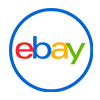What is Naver Window Scraper, and How does it Work?
Naver Window Scraper is a powerful tool designed to scrape data from Naver Window, a leading South Korean online shopping platform. It helps businesses, data analysts, and marketers extract data from Naver Window for various use cases such as product research, competitor analysis, pricing comparison, and customer sentiment monitoring. The scraper works by sending automated requests to the Naver Window website and parsing the HTML content to collect key data points like product names, images, prices, reviews, ratings, and seller details. Using the robust and scalable Naver Window Scraping API, users can automate this entire data collection process and integrate the results into their internal systems, dashboards, or databases. The Naver Window Scraper is designed with smart algorithms to handle dynamic web content, pagination, and anti-scraping measures, ensuring accurate and uninterrupted data flow. It eliminates the need for manual data entry, saves time, and boosts operational efficiency. Whether you're running an eCommerce platform, market research firm, or data analytics company, this tool offers a reliable way to gain real-time insights from Naver Window. With the Naver Window Scraping API, extracting structured, up-to-date eCommerce data becomes seamless and efficient.
Why extract data from Naver Window?
Extracting data from Naver Window provides valuable insights for businesses aiming to understand the South Korean eCommerce landscape. Naver Window is a popular platform that features a wide range of products, seller profiles, customer reviews, and real-time pricing details. By using a Naver Window Scraper to extract data from Naver Window, companies can perform in-depth market research, analyze competitor strategies, monitor consumer behavior, and refine their product offerings accordingly. With the help of the Naver Window Scraping API, data can be gathered automatically and in real time, ensuring up-to-date and actionable information. This data helps businesses make informed decisions regarding pricing, promotions, product listings, and inventory management. Moreover, tracking user reviews and ratings provides valuable feedback for improving customer satisfaction and enhancing brand reputation. In short, the ability to scrape data from Naver Window empowers organizations with strategic insights needed to stay competitive in a fast-evolving digital marketplace.
Is it legal to extract Naver Window data?
Extracting data from Naver Window can be legal when conducted ethically and responsibly, focusing on publicly accessible information. In South Korea, a Supreme Court ruling clarified that scraping publicly available data without bypassing security measures or accessing restricted areas is not illegal. The court emphasized that if a website does not implement technical barriers to restrict access, scraping its publicly accessible data may not violate the law. However, legality also depends on how the data is accessed and used. It's essential to review Naver's terms of service, as unauthorized scraping that violates these terms could lead to legal issues. Additionally, scraping personal data or content protected by copyright without proper authorization may infringe upon data protection and intellectual property laws.
To ensure compliance:
- Focus on publicly available data.
- Avoid accessing restricted or private areas of the website.
- Respect Naver's terms of service and robots.txt directives.
- Refrain from collecting personal or sensitive information.
- Use the data for legitimate purposes, such as market research or analysis.
Consulting with legal professionals familiar with South Korean law and Naver's policies is advisable to navigate the complexities of data extraction legally and ethically.
How can I extract data from Naver Window?
To extract data from Naver Window, you need the right tools and a structured approach. Naver Window is a dynamic eCommerce platform showcasing Korean brands, products, reviews, and seller details. Manually collecting this data is time-consuming and error-prone. That’s where the Naver Window Scraper comes in—a powerful solution designed to scrape data from Naver Window quickly and accurately.
The Naver Window Scraper uses automated scripts to visit Naver Window pages, parse the HTML structure, and extract key information such as product names, prices, images, descriptions, seller details, and customer reviews. This data can be stored in formats like CSV, JSON, or directly into a database for further analysis.
For developers and businesses seeking seamless integration, the Naver Window Scraping API offers a more advanced and scalable solution. With this API, you can automate data collection workflows, schedule tasks, and fetch real-time data directly into your systems. Whether you’re conducting market research, price comparison, trend analysis, or monitoring competitor activity, the API simplifies the process.
To get started, follow these steps:
- Define your data requirements (e.g., product names, reviews, prices).
- Set up the Naver Window Scraper or integrate the Naver Window Scraping API.
- Run scraping tasks while respecting the platform’s terms and avoiding overloading the server.
- Clean and structure the data for use in your dashboards or analytics tools.
Using a reliable Naver Window Scraper ensures accuracy, efficiency, and scalability. It eliminates manual work and provides up-to-date insights into Korean eCommerce trends. Whether you're a business analyst, data engineer, or eCommerce strategist, the ability to scrape data from Naver Window gives you a significant competitive advantage in decision-making and planning.
Input Options
When using a Naver Window Scraper or integrating the Naver Window Scraping API, you can customize the scraping process with various input options to tailor the data extraction according to your specific needs. These input options allow you to fine-tune how you extract data from Naver Window, ensuring you get exactly what you're looking for without unnecessary clutter.
Here are some of the most useful input options:
- Search Keywords: Input specific product names, categories, or brands to scrape data from Naver Window based on relevant search queries. This is useful for product research and competitive analysis.
- Category Filters: Target particular categories such as fashion, electronics, home goods, or cosmetics. This narrows down your results and improves data relevance.
- Page Numbers or Limits: Set the number of pages or product listings to scrape, especially helpful when you're working with large datasets and want to control the scraping volume.
- Date Range: Filter reviews, ratings, or listings by date to extract the most recent or historical data as needed for trend analysis.
- Seller Names or IDs: Focus your scraping efforts on specific sellers or stores to monitor their offerings, pricing strategies, and customer feedback.
- Location Filters: Although Naver is primarily Korean-focused, some sellers may offer shipping or services to other regions—use location filters to refine those results.
- Custom CSS/XPath Selectors: For advanced users, define custom selectors to capture specific elements from the page layout.
By using these input options with your Naver Window Scraper or Naver Window Scraping API, you ensure a more efficient, targeted, and customizable data extraction process. This flexibility allows businesses to extract data from Naver Window that aligns precisely with their goals, whether it's product tracking, market research, or eCommerce analytics.
Sample Result of Naver Window Data Scraper
Here’s a sample result of using a Naver Window Scraper to extract data from Naver Window, including key product and seller details. Below is a JSON format output example followed by sample Python code using requests and BeautifulSoup. This is for educational purposes only and assumes you're scraping public, non-restricted content.
Sample Result (JSON Format)
[
{
"product_title": "Moisturizing Cream - 100ml",
"price": "₩15,000",
"rating": "4.8",
"review_count": 245,
"seller_name": "BeautyStore Korea",
"product_url": "https://smartstore.naver.com/beautystore/product/123456789"
},
{
"product_title": "Herbal Shampoo - 300ml",
"price": "₩12,500",
"rating": "4.5",
"review_count": 187,
"seller_name": "HerbMart",
"product_url": "https://smartstore.naver.com/herbmart/product/987654321"
}
]
Sample Python Code to Scrape Data
import requests
from bs4 import BeautifulSoup
headers = {
"User-Agent": "Mozilla/5.0"
}
def scrape_naver_window(query):
url = f"https://search.shopping.naver.com/search/all?query={query}"
response = requests.get(url, headers=headers)
soup = BeautifulSoup(response.text, "html.parser")
results = []
for item in soup.select("div.basicList_info_area__17Xyo"):
title = item.select_one("a.basicList_link__1MaTN").text.strip()
price = item.select_one("span.price_num__2WUXn").text.strip()
link = item.select_one("a.basicList_link__1MaTN")["href"]
rating_tag = item.select_one("em.basicList_star__1Yz6k")
rating = rating_tag.text if rating_tag else "N/A"
results.append({
"product_title": title,
"price": price,
"rating": rating,
"product_url": link
})
return results
# Example usage
data = scrape_naver_window("moisturizer")
for d in data:
print(d)
This code mimics the functionality of a basic Naver Window Scraper. For production use, consider implementing a full Naver Window Scraping API with error handling, proxy rotation, rate limits, and support for dynamic content.
Integrations with Naver Window Data Scraper
Integrating the Naver Window Scraper or Naver Window Scraping API into your business systems allows seamless automation of data workflows, making it easier to extract data from Naver Window and turn it into actionable insights. Below are the most common integration options to maximize the value of scraped data:
1. API Integration
Use the Naver Window Scraping API to connect directly with your internal systems. This allows real-time access to product, pricing, and review data.
- How: RESTful API endpoints return data in JSON/CSV.
- Use Case: Pull updated product info into dashboards or CRMs automatically.
2. eCommerce Platforms
Integrate with platforms like Shopify, WooCommerce, or Magento to enhance product listings or monitor competitors.
- How: Sync scraped Naver Window product data to your store for comparison or enrichment.
- Use Case: Optimize pricing and product positioning.
3. Business Intelligence Tools
Feed Naver Window data into tools like Power BI, Tableau, or Looker for visualization and analytics.
- How: Export scraped data into a database or CSV, then import to BI tools.
- Use Case: Monitor trends, seller performance, or market gaps.
4. Machine Learning Pipelines
Use scraped data to train pricing prediction models, sentiment analysis, or recommendation engines.
- How: Integrate data pipelines with tools like TensorFlow, PyTorch, or Scikit-learn.
- Use Case: Predict best-selling products or identify customer sentiment.
5. Cloud Storage & Databases
Save extracted data directly to cloud storage (AWS S3, Google Cloud Storage) or databases (MySQL, MongoDB, BigQuery).
- How: Use APIs or scraping scripts with database connectors.
- Use Case: Centralized storage for historical and live analysis.
By integrating your Naver Window Scraper, you ensure the data you scrape from Naver Window is immediately usable, automated, and aligned with your business intelligence goals. Want help setting up one of these integrations?
Executing Naver Window Data Scraping with Real Data API Naver Window Scraper
To execute Naver Window Data Scraping with Real Data API using a Naver Window Scraper, you need to follow a structured process for data extraction, handling, and integration into your systems. Below is a step-by-step guide on how you can do this:
Steps for Executing Naver Window Data Scraping with Real Data API:
1. Sign Up for the Real Data API
Before you begin, you'll need to register for Real Data API to get access to their Naver Window Scraping API. This provides you with an API key that will allow you to interact with the Naver Window platform programmatically.
- Sign Up: Go to Real Data API's official website and create an account.
- API Key: Once registered, obtain your API key for authenticating requests.
2. Set Up the Naver Window Scraper
You’ll need to configure the Naver Window Scraper with the correct input parameters to get the specific data you want.
- Configure Parameters: Set up filters such as:
- Search keywords (e.g., “moisturizer”, “laptop”).
- Product categories.
- Pricing range.
- Review count, ratings, etc.
3. Make API Requests to Extract Data
With the Naver Window Scraping API, you can send requests to extract data from the Naver Window platform. Below is an example of how to make an API request:
import requests
# Your Real Data API endpoint
api_url = "https://api.realdataprovider.com/v1/naver_window/scrape"
# API Key for authentication
api_key = "YOUR_API_KEY"
# Search query parameters
params = {
"query": "moisturizer", # Product keyword
"category": "Beauty", # Category (optional)
"page": 1, # Page number (pagination)
"limit": 20 # Number of results per page
}
# API request headers
headers = {
"Authorization": f"Bearer {api_key}"
}
# Make the API request to the Real Data API
response = requests.get(api_url, params=params, headers=headers)
# Check if the request is successful
if response.status_code == 200:
data = response.json()
print(data)
else:
print(f"Error: {response.status_code}")
4. Parse and Clean the Extracted Data
Once you receive the JSON data from the API, it’s time to parse and clean it for use in your system.
- Extract Key Fields: Extract product names, prices, ratings, reviews, and other relevant details.
- Store in CSV/Database : After cleaning, you can store the data in a database or export it to a CSV for further analysis.
Example:
import pandas as pd
# Assuming 'data' is the JSON response from the API
products = data['products']
# Create a DataFrame
df = pd.DataFrame(products)
# Clean data (e.g., removing extra spaces, formatting)
df['price'] = df['price'].str.replace('₩', '').astype(float)
# Save to CSV
df.to_csv('naver_window_data.csv', index=False)
print("Data saved to naver_window_data.csv")
5. Integrate Data into Your Systems
Once the data is cleaned and saved, you can integrate it into your systems for analysis, monitoring, or reporting:
- Dashboards: Use tools like Power BI, Tableau, or Google Data Studio to visualize the data.
- Pricing Automation: Implement automated pricing strategies based on the scraped data.
- Market Research: Use the data for trend analysis or competitor benchmarking.
6. Monitor and Automate Scraping
Set up automated tasks to regularly scrape data from Naver Window using the Real Data API. You can schedule scraping tasks with cron jobs, cloud services (AWS Lambda, Google Cloud Functions), or custom scripts to run at specific intervals.
By leveraging the Naver Window Scraper through the Real Data API, you can efficiently extract data from Naver Window and use it for a wide range of business applications. This method allows you to automate data collection, gain insights, and make data-driven decisions to stay competitive in the market.
Key Benefits of Real Data API Naver Window Scraper
The Real Data API Naver Window Scraper offers several key benefits for businesses, marketers, and data analysts looking to extract data from Naver Window efficiently and at scale. Here are the primary advantages of using this tool:
1. Real-Time Data Access
The Naver Window Scraper provides access to up-to-date product information, reviews, pricing, and more. By utilizing the Naver Window Scraping API, users can automate the process of retrieving fresh data in real-time. This is crucial for businesses monitoring changing prices or customer sentiment, as it ensures they are working with the latest available information.
2. Scalability
The Naver Window Scraper is designed to handle large-scale data scraping. Whether you need to scrape data from Naver Window for a single product or thousands of listings, the API can scale to meet your needs. This flexibility allows businesses to gather vast amounts of data quickly, supporting robust market research and competitor analysis.
3. Automation and Efficiency
By automating the data extraction process with the Naver Window Scraping API, you eliminate the need for manual data entry, which saves time and reduces errors. The scraper can be set to run at regular intervals, ensuring that you receive continuous, consistent updates without intervention.
4. Customizable Data Extraction
The Naver Window Scraper provides flexibility in the type of data you wish to extract from Naver Window. You can choose specific attributes like product names, prices, ratings, and reviews, ensuring that the data collected aligns with your specific business goals. This customization makes it easier to focus on the most relevant data for your use case.
5. Competitive Advantage
With the ability to scrape data from Naver Window, businesses gain valuable insights into competitor products, pricing strategies, and customer feedback. This data helps in adjusting marketing campaigns, improving products, and making better-informed pricing decisions.
Using the Real Data API Naver Window Scraper ensures that your data collection is accurate, efficient, and tailored to your business needs.









































